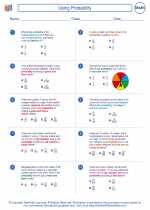Latitude Study Guide
Latitude is a geographic coordinate that specifies the north-south position of a point on the Earth's surface. It is measured in degrees, minutes, and seconds, with the equator as the starting point (0 degrees latitude) and the poles as the endpoints (90 degrees north latitude and 90 degrees south latitude).
Key Concepts
- Equator: The imaginary line that circles the Earth halfway between the North Pole and the South Pole, representing 0 degrees latitude.
- North Pole: The point at 90 degrees north latitude.
- South Pole: The point at 90 degrees south latitude.
- Latitude Lines: Also known as parallels, these are the lines that run east-west and measure the distance north or south of the equator.
Understanding Latitude
Latitude is crucial for navigation, as it helps determine locations on the Earth's surface. It also plays a significant role in climate and weather patterns, as regions closer to the equator generally experience warmer temperatures compared to those closer to the poles.
Study Tips
- Memorize the key latitudinal lines and their corresponding degrees (e.g., equator at 0 degrees, North Pole at 90 degrees north).
- Practice converting latitude from degrees to minutes and seconds, and vice versa.
- Explore the impact of latitude on global climate and geography.
- Use maps and globes to visualize and understand the concept of latitude.
Quiz Yourself
Test your knowledge with the following questions:
- What is the latitude of the North Pole?
- How does latitude impact climate?
- What is the significance of the equator in relation to latitude?
Now that you have a solid understanding of latitude, you're ready to navigate the Earth's surface with confidence!
[Latitude] Related Worksheets and Study Guides:
.◂Math Worksheets and Study Guides Seventh Grade. Using Probability
Study Guide Using Probability
Using Probability  Worksheet/Answer key
Worksheet/Answer key Using Probability
Using Probability  Worksheet/Answer key
Worksheet/Answer key Using Probability
Using Probability  Worksheet/Answer key
Worksheet/Answer key Using Probability
Using Probability 

 Worksheet/Answer key
Worksheet/Answer key
 Worksheet/Answer key
Worksheet/Answer key
 Worksheet/Answer key
Worksheet/Answer key

The resources above cover the following skills:
Data Analysis and Probability (NCTM)
Understand and apply basic concepts of probability
Compute probabilities for simple compound events, using such methods as organized lists, tree diagrams, and area models.